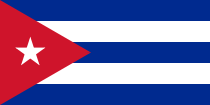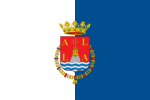Alicante
| Alacant / Alicante | |||||
|
|||||
| Location | |||||
|---|---|---|---|---|---|
 |
|||||
| Coordinates : Time zone : CET (GMT +1) - summer : CEST (GMT +2) |
|||||
| General information | |||||
| Native name | Alacant (Valencian) | ||||
| Spanish name | Alicante | ||||
| Founded | 324 BC | ||||
| Postal code | 03000 - 03016 | ||||
| Website | www.alicante.es | ||||
| Administration | |||||
| Country | Spain | ||||
| Autonomous Community | Valencian Community | ||||
| Province | Alicante | ||||
| Comarca | Alacantí | ||||
| Administrative Divisions | 8 | ||||
| Neighborhoods | 42 | ||||
| Mayor | Sonia Castedo Ramos (PP) | ||||
| Geography | |||||
| Land Area | 201.27 km² | ||||
| Altitude | 3 m AMSL | ||||
| Population | |||||
| Population | 322,673 (2007) | ||||
| - rank in Spain: | 12 | ||||
| Density | 1,603 hab./km² (PD/sqmi) (2007) | ||||
Alicante or Alacant (Spanish language: Alicante, Valencian: Alacant) is a city in Spain, the capital of the province of Alicante and of the comarca of the Alacantí, in the southern part of the Valencian Community. It is also a historic Mediterranean port. The population of the city of Alicante proper was 322,673, estimated as of 2007[update], of the entire urban area, 434,505, ranking as the second-largest Valencian city. Population of the metropolitan area (including Elche and satellite towns) was 734,362 as of 2007 estimates, ranking as the eighth-largest metropolitan area of Spain.
Alicante is one of the fastest-growing cities in Spain. The local economy is based upon tourism in the beaches from Costa Blanca coast and particularly the second residence construction boom which started in the 1960s and reinvigorated again by the late 1990s. Services and public administration also play a major role in the city's economy. The construction boom has raised many environmental concerns and both the local autonomous government and city council are under scrutiny by the European Union. The construction soar is the subject of hot debates among politicians and citizens alike. The latest of many public battles concerns the plans of the Port Authority of Alicante to construct an industrial estate on reclaimed land in front of the city's coastal strip, in breach of local, national and European regulations.
Luis Díaz Alperi (1945), of the Partido Popular (People's Party), was reelected city mayor with an absolute majority for his fourth term in the Municipal Elections of May 2007, followed closely by Etelvina Andreu (1969) of the Partido Socialista (PSOE). Díaz Alperi resigned in October 2008, and a close aide, Sonia Castedo, was appointed mayor.
The city has regular ferry services to the Balearic Islands and Algeria, and an international airport is nearby, served by Iberia and other airlines. The city is strongly fortified, with a spacious harbour. Amongst the most notable features of the city are its main castle, the Castle of Santa Bárbara, which sits high above the city, and its port, which has become the subject of bitter controversy in the city as residents battle to keep it from being changed into an industrial estate (see Recent History below).
The most important festival, the Bonfires of Saint John, takes place during the summer solstice. This is followed a week later by seven nights of firework and pyrotechnic contests between companies on the urban beach Playa del Postiguet. Another well-known festival is Moros y Cristianos in Altozano or San Blas district. Overall, the city boasts a year-round nightlife, helped by tourists, fun-loving residents, and a large student population of the University of Alicante. The nightlife social scene tends to shift to nearby Playa de San Juan (St. John's Beach) during the summer months.
The city is the headquarters of the Office for Harmonization in the Internal Market and a sizeable population of Euro public workers live here.
At the foot of the main staircase of the City Hall Building (Ayuntamiento) is the "cota cero" (zero point), used as the point of reference for measuring the height above or below sea level of any point in Spain, due to the marginal tidal variations of the Mediterranean sea in Alicante.
Since 2005 Alicante hosts Ciudad de la Luz, one of the largest film's studios in Europe. Spanish and international movies such as Asterix at the Olympic Games by Frédéric Forestier and Thomas Langmann, Manolete by Menno Meyjes have been shot there.
Contents |
History
The area around Alicante has been inhabited for over 7000 years, with the first tribes of hunter gatherers moving down gradually from Central Europe between 5000 and 3000 BC. Some of the earliest settlements were made on the slopes of Mount Benacantil. By 1000 BC Greek and Phoenician traders had begun to visit the eastern coast of Spain, establishing small trading ports and introducing the native Iberian tribes to the alphabet, iron and the pottery wheel. By the sixth century BC, the rival armies of Carthage and Rome began to invade and fight for control of the Iberian Peninsula. The Carthaginian general Hamilcar Barca established the fortified settlement of Akra Leuka (Greek: Aκρα Λευκa, meaning "White Mountain" or "White Point"), where Alicante stands today.

Although the Carthaginians conquered much of the land around Alicante, the Romans would eventually rule Hispania Tarraconensis for over 700 years. By the 5th century AD, Rome was in decline; the Roman predecessor town of Alicante, known as Lucentum (Latin), was more or less under the control of the Visigothic warlord Teodmiro. However neither the Romans nor the Goths put up much resistance to the Arab conquest of Medina Laqant in the 8th century. The Moors gave the city its modern name - Alicante is Arabic for "city of lights".[1] The Moors ruled southern and eastern Spain until the 11th century reconquista (reconquest). Alicante was finally taken in 1246 by the Castilian king Alfonso X, but it passed soon and definitely to the Kingdom of Valencia in 1298 with the Catalonian King James II of Aragon. It gained the status of Royal Village (Vila Reial) with representation in the medieval Valencian Parliament.
After several decades of being the battlefield where Kingdom of Castile and the Crown of Aragón clashed, Alicante became a major Mediterranean trading station exporting rice, wine, olive oil, oranges and wool. But between 1609 and 1614 King Felipe III expelled thousands of moriscos who had remained in Valencia after the reconquista, due to their allegiance with Barbary pirates who continually attacked coastal cities and caused much harm to trade. This act cost the region dearly; with so many skilled artisans and agricultural labourers gone, the feudal nobility found itself sliding into bankruptcy. Things got worse in the early 18th century; after the War of Spanish Succession, Alicante went into a long, slow decline, surviving through the 18th and 19th centuries by making shoes and agricultural products such as oranges and almonds, and its fisheries. The end of the 19th century witnessed a sharp recovery of the local economy with increasing international trade and the growth of the city harbour leading to increased exports of several products (particularly during World War I when Spain was a neutral country).

During the early twentieth century, Alicante was a minor capital which enjoyed the benefit of Spain's neutrality during World War I, which provided new opportunities for the local industry and agriculture. The Rif War in the 1920s saw numerous alicantinos drafted to fight in the long and bloody campaigns at the former Spanish protectorate (Northern Morocco) against the Rif rebels. The political unrest of the late 1920s led to the victory of republican candidates in the local council elections throughout the country, and the abdication of King Alfonso XIII. The proclamation of the Second Spanish Republic was much celebrated in the city on April 14, 1931. The Spanish Civil War broke out on July 17, 1936. Alicante was the last city loyal to the Republican government to be occupied by General Franco's troops on April 1, 1939, and its harbour saw the last Republican government officials fleeing the country. Even if not as famous as the bombing of Guernica by the German Luftwaffe, Alicante was the target of some vicious air bombings during the three years of civil conflict, most remarkably the bombing by the Italian Aviazione Legionaria of the Mercado de Abastos in May 25, 1938 in which more than 300 civilians perished.

The next 20 years under Franco's dictatorship were difficult for Alicante as it was for the entire country. However, the late 1950s and early 1960s saw the onset of a lasting transformation of the city due to tourism. Large buildings and complexes rose in nearby Albufereta and Playa de San Juan, with the benign climate being the best tool to bring prospective buyers and tourists who kept hotels reasonably busy. The tourist development, aside from construction, also brought numerous businesses such as restaurants, bars and other businesses focused on visitors. Also, the old airfield at Rabasa was closed and air traffic moved to the new El Altet airport, which made for a convenient facility for charter flights bringing tourists from northern European countries.
When Franco died in 1975, his successor Juan Carlos I successfully oversaw the transition of Spain to a democratic constitutional monarchy. Governments of nationalities and regions were given more autonomy, and the Valencian region was not an exception.
The port has been reinventing itself since the industrial decline the city suffered in the 1980s (with most mercantile traffic lost in favour of Valencia's harbour). In recent years, the Port Authority has established it as one of the most important ports in Spain for cruises, with 72 calls to port made by cruises in 2007 bringing some 80,000 cruise passengers and 30,000 crew to the city each year.[2] The moves to develop the port for more tourism have been welcomed by the city and its residents, but the latest plans to develop an industrial estate in the port have caused great controversy.
Population
The official population of Alicante in 2006 was 322,673 inhabitants, and 734,362 in the metropolitan area "Alicante-Elche". About 15% of the population is foreign, mostly those from Argentina, Ecuador, and Colombia who have arrived in the previous 10 years as immigrants. There are also immigrants from other origins such as Romania, Russia, Ukraine and Morocco, many of which are under illegal alien status and therefore are not accounted for in official population figures. The real percentage of foreign population is higher, since the Alicante metropolitan area is home to many Northern European retired citizens, even if officially they are still residents of their own countries. The British population is by far the largest non-Spanish group of foreign nationals in the city. In the same pattern, a sizable amount of permanent residents are Spanish nationals who officially still live in Madrid, the Basque provinces, or other areas of the country.
| Foreign Population (more than 1,000 persons/nationality)[3] | |||||||
|---|---|---|---|---|---|---|---|
| Pos. | Nationality | Population | |||||
| 1st | 4,596 | ||||||
| 2nd | 4,315 | ||||||
| 3rd | 3,564 | ||||||
| 4th | 2,645 | ||||||
| 5th | 2,478 | ||||||
| 6th | 2,245 | ||||||
| 7th | 1,988 | ||||||
| 8th | 1,819 | ||||||
|
|
|
Climate
Alicante enjoys Mediterranean climate with mild temperatures throughout the year and little rain, concentrated in equinoctial periods. Temperature range is between 16.8° and 6.2° in January and between 30.6° and 20.4° in August, with the average annual temperature of 17.8°. Daily oscillations in temperature are very small because of maritime influence, although occasional episodes of wind from the west could result in temperature range in excess of 15°. Annual oscillations in temperature are small as well, i.e. winters are mild and summers are warm.
Rainfall is 336 mm per year, with September and October being the rainiest months due to torrential rains caused by the cold drop, which can reach over 200 mm in 24 hours causing severe flooding. Because of this irregularity, on average only 37 rainy days per a year are observed, while the total number of sunshine hours reaches 2,864 per year.
The record maximum temperature of 41.4° was recorded in Alicante on July 4, 1994. The minimum temperature of -4.6° was registered on February 12, 1956. The record rainfall of 270.2 mm in 24 hours was observed on September 30, 1997.

| 1971-2000 | Jan | Feb | Mar | Apr | May | Jun | Jul | Aug | Sep | Oct | Nov | Dec | YEAR |
|---|---|---|---|---|---|---|---|---|---|---|---|---|---|
| Record high °C | 29,2 | 29,4 | 32,6 | 32,6 | 35,1 | 37,8 | 44,4 | 42,4 | 38,4 | 36,2 | 30,6 | 26,6 | 44,4 |
| Average high °C | 16,8 | 17,8 | 19,2 | 20,9 | 23,6 | 27,2 | 30,1 | 30,6 | 28,4 | 24,4 | 20,4 | 17,6 | 23,1 |
| Average low °C | 6,2 | 7,0 | 8,2 | 10,1 | 13,3 | 17,1 | 19,7 | 20,4 | 17,8 | 13,7 | 10,0 | 7,3 | 12,6 |
| Record low °C | -2,6 | -4,6 | -1,0 | 2,6 | 4,8 | 10,4 | 13,4 | 13,2 | 9,4 | 4,0 | 0,2 | -2,6 | -4,6 |
| Average rainfall mm | 22 | 26 | 26 | 30 | 33 | 17 | 6 | 8 | 47 | 52 | 42 | 26 | 336 |
Transport

Alicante Airport outranks its Valencian counterpart, being among the busiest airports in Spain along with Madrid, Barcelona, Palma and Málaga and keeps expanding. It is connected with Madrid and Barcelona by frequent Iberia and Spanair flights, with many Western European cities through carriers such as Jet2.com, Monarch Airlines, Globespan, Ryanair and Air Berlin and has also flights to Algiers and Russia. In addition, Alicante's only link to South America, specifically Bogotá, is provided by Avianca.
Alicante railway station is used by cercanías linking Alicante with suburban and Murcia. Long-range RENFE trains run frequently to Madrid and Barcelona.
Alicante Tram connects the city with outlying settlements along Costa Blanca. As of 2008, it runs up to Benidorm with further extension to Denia under construction.
Main sights
Every summer in Alicante, a two-month-long programme of music, theatre and dance is staged in the Paseo del Puerto.[4]
Famous citizens


- George Washington Montgomery, (1804-1841), born in Alicante, United States diplomat and editor/publisher of the first Spanish language translation of the works of Washington Irving.[5]
- Carlos Arniches (1866-1943), novelist
- Rafael Altamira y Crevea (1866-1951), co-founder of Permanent Court of International Justice so-called the World Court, after 1945 International Court of Justice
- Francisco Javier de Balmis (1753-1819) physician who headed the Balmis expedition to vaccinate the Spanish-colonies population against smallpox.
- Gabriel Miró (1879-1930), novelist
- Antonio Gades (1936-2004), Flamenco dancer
- Juan Escarré (1969), field hockey player
- Belen Rueda, actress
- Miriam Blasco, judoka Olympic winner
- Isabel Fernandez, judoka Olympic winner
- Vanessa Romero, model and actress
- Maria Jurado, model and actress
- Esther Cañadas, model and actress
- Pedro Ferrándiz, basketball coach
- Hannibal Laguna, fashion designer
- Francisco Rufete, footballer
- Miguel Hernández, poet
Twin towns
 Nice, France
Nice, France Carloforte, Italy
Carloforte, Italy Herzliya, Israel
Herzliya, Israel León, Nicaragua
León, Nicaragua Matanzas, Cuba
Matanzas, Cuba Oran, Algeria
Oran, Algeria Riga, Latvia
Riga, Latvia Toyooka, Japan
Toyooka, Japan Wenzhou, People's Republic of China
Wenzhou, People's Republic of China
References
- ↑ Alicante City
- ↑ El puerto de Alicante registrará 72 escalas de cruceros durante 2007 - Turijobs.com
- ↑ Ayuntamiento de Alicante Sección de Estadística. La Población de Alicante (01-01-2006).
- ↑ Alicante Festivals
- ↑ Who Was Who in America, Historical Volume, 1607-1896. Chicago: Marquis Who's Who. 1963.
External links
- Official website of Alicante
- Official website of the Diputación Provincial de Alicante (Spanish)
- Dates and numbers of the municipalities of Alicante Province. Diputación Provincial de Alicante, Area of Presidency, Documentation Unit (Spanish)
- Website of the Universitat d´Alacant
- News of Alicante. Noticias de Alicante
|
|||||
|
|||||

